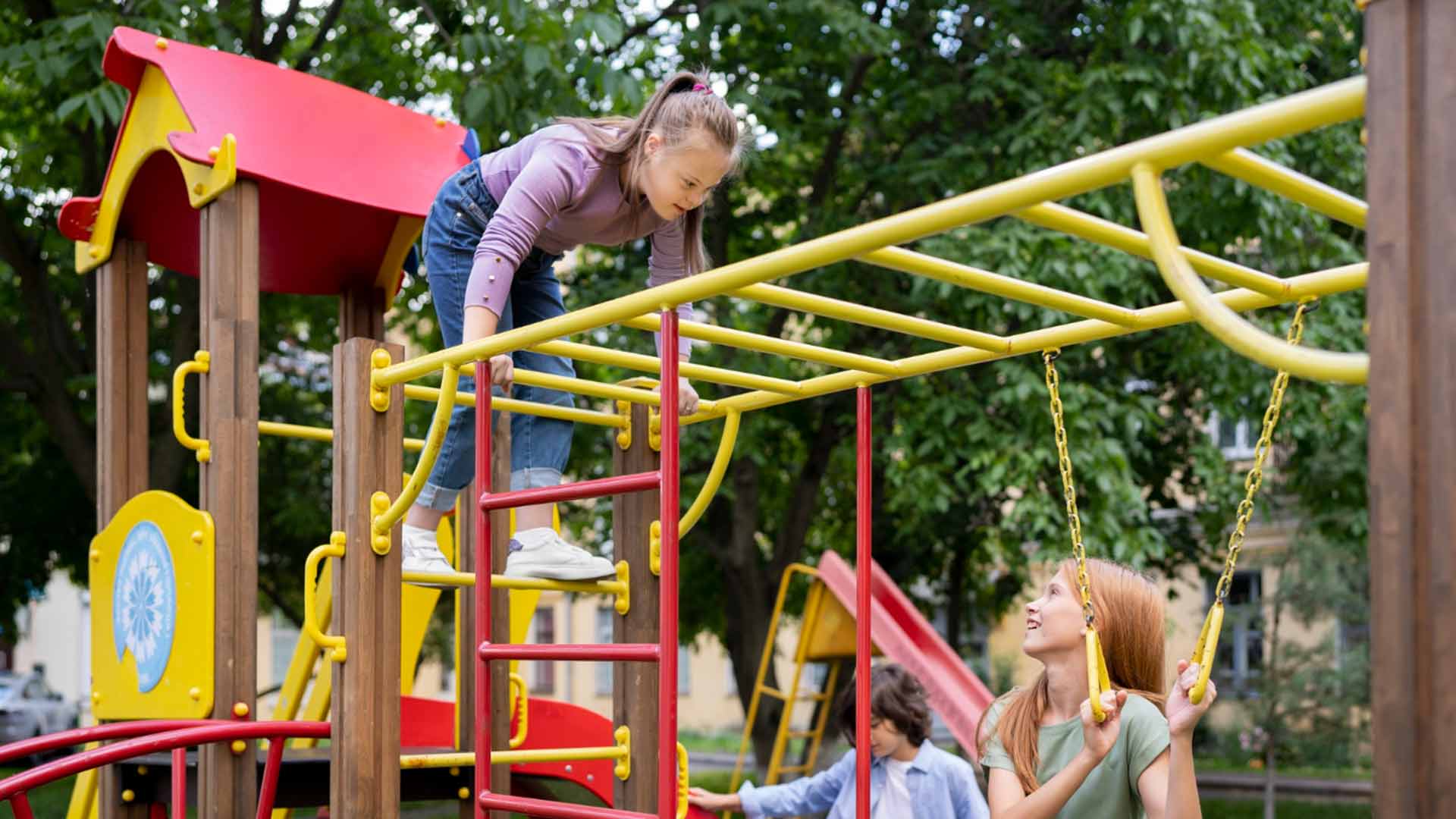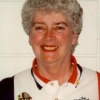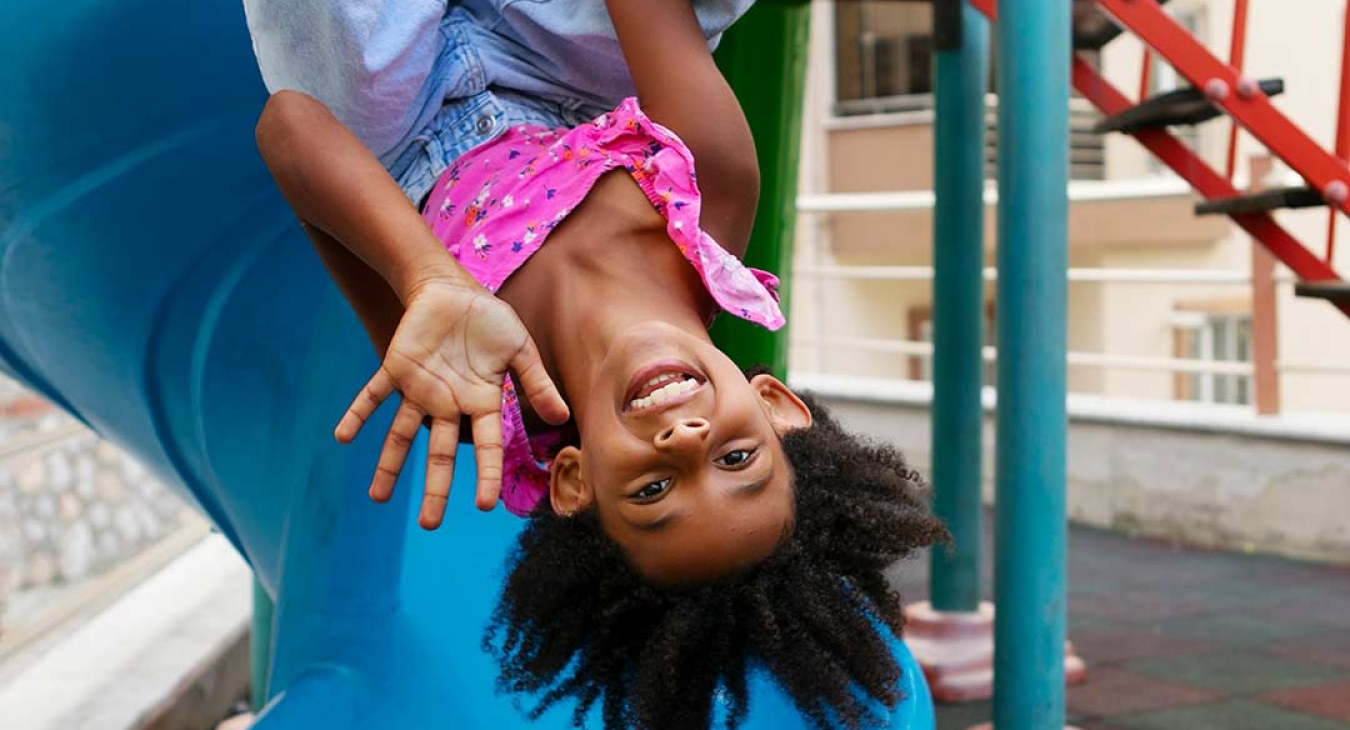In 1997, the National Program for Playground Safety (NPPS) began sponsoring the National Playground Safety Day every April. Its purpose was to raise awareness of playground safety across the nation. After two years, the event became so successful, that it was expanded into National Playground Safety Week.
This expansion allows time to emphasize each element of the SAFE model (Supervision, Appropriate Development Design, Fall Surfacing, and Equipment and surfacing maintenance) on the first four days and general playground safety on Friday.
Since the inception of Playground Safety Week, we have encouraged individuals to contact NPPS in order to get a list of activities to promote the idea of SAFE Playgrounds for children. The list of activities include having children write stories, poems, songs, and draw pictures about safe playgrounds; having adults and children do a safety assessment of their playgrounds, and contacting the local media to feature stories concerning the importance of having safe playgrounds in the community. We have also encouraged individuals in each state to ask their governors to sign a proclamation to declare Playground Safety Week. During the first year (1997) we received two proclamations. That number has steadily increased: 25 in 1998; 33 in 1999; 43 in 2000; 42 in 2001 and 45 in 2002. We aim to obtain the support of all 50 governors (even those who claim they do not have the paper to sign a proclamation!). Usually, a state resident must ask for the creation and signing of such a proclamation. Local Safe Kids Coalition members have been particularly effective in obtaining these declarations. However, the more people in a State that contact the governor’s office, the faster this issue gets on the radar screen.
Safety report cards based on the first comprehensive survey (conducted by NPPS) of playgrounds were released to each state during National Playground Safety Week in 2000. In 2001, NPPS held a National Playground Safety Summit that brought together state officials from around the country representing the Departments of Education, Natural Resources, and Child Resources to discuss the issues related to playground safety. These items are an illustration of the variety of events that can be emphasized to celebrate National Playground Safety Week.
During National Playground Safety Week in 2002, we decided to involve children more directly in the safety message. As a result, we created the Kid Checker Program that provides children with an easy assessment sheet to determine if their playgrounds have adequate supervision, appropriate developmental design, safe falling surfacing, and equipment maintenance. In this way, the users (children) have been empowered to check for safety. We had children in all 50 states participate in this program and found that they could also spot areas where changes were needed. In several cases, they presented their findings to school administrators and the needed changes were made. Because of the great success of this program, we continued it for National Playground Safety Week 2003.
In addition, the first annual Ahrens National Playground Safety Advocate of the Year Award was given. The first person honored with this award was Dr. Francis Wallach from New York who was recognized for over 30 years of work and commitment in making playgrounds safe for children.
With the support and cooperation of the International Playground Equipment Manufacturers (IPEMA) and the Consumer Product Safety Commission (CPSC), we focused National Playground Safety Week on identifying and removing unsafe equipment for the play environment. Specifically, we targeted the 14% of public playgrounds that still contain monkey bars and/or animal swings. CPSC has encouraged the removal of these items since the early 80’s because of the serious injuries children have received from them. Although animal swings may look cute, they have been responsible for children receiving serious concussions and other injuries because they have the potential of being battering rams. In the same light, the old monkey bars (also called jungle gyms) may look like fun for climbing, but the interior bars make it probable that a serious and life-threatening injury can occur if a child should fall. Our poster child, Andrew Kidd suffered such an injury that resulted in seventeen surgeries to repair the damage. There are simply too many safer alternatives for climbing out there to continually put children at risk on this type of equipment.
CPSC again listed the recall notice on their website and IPEMA members have agreed to give individuals credit toward the purchase of new equipment when evidence of the removal of the animal swings or monkey bars was given. Contractors who encounter these items on playgrounds that they are working on can help the effort by encouraging the owners of the playground to remove all animal swings and monkey bars.
So, what can we all do to make National Playground Safety Week the best ever?
- Encourage children you know to participate in the Kid Checker Survey. Each child that sends a survey gets a Kid Checker Certificate.
- Encourage facilities that have animal swings or monkey bars to remove them from the playground.
- Contact your local media to request they help publicize stories concerning playground safety efforts in your community.
- Participate in National Playground Safety Week by doing activities related to Supervision, Appropriate Developmental Design, Fall Surfacing and Equipment and surfacing maintenance so that children may be SAFE on the playground.
After you have been successful in making playgrounds safer in your community, write a note to us about your success at www.playgroundsafety.org. We would like to feature some of those stories in our newsletter. Remember, by working together we can help make America’s playgrounds SAFE!














Add new comment